After speaking about Romance of the Rails in Albuquerque Friday night, I took advantage of a day off between engagements to ride the New Mexico Rail Runner to Santa Fe and back. This train is costing the state close to $800 million in capital costs including interest (which works out to annual payments of about $30 million a year) plus another $30 million a year in operations and maintenance costs, while it is bringing in slightly more than $2 million a year in fares. The federal government also recently gave the state another $30 million to install positive train control.
Click any photo for a larger view.
The Albuquerque train station has a large memorial commemorating the end of the first, second, and third years of Rail Runner service in 2007, 2008, and 2009. Though there is plenty of room for more plaques, perhaps the state gave up on annual celebrations because they were embarrassed by poor ridership.
The nominal adult fare is $10 each way, but since I bought it on the internet with a senior discount, my round-trip fare was $6. No wonder they lose money. Before the train, a commuter bus between Santa Fe and Albuquerque charged $3 a ride even if you weren’t a senior and didn’t buy on the internet. The average fare actually collected in 2017 was $2.58, though of course a lot of people take shorter trips than Albuquerque to Santa Fe.
Since the state didn’t have room for turning facilities, the northbound train from Albuquerque (which actually started in the southern suburb of Belen) backs up all the way to Santa Fe, controlled by a special cab at the end of some of the coaches. It might seem weird to back up at 79 miles per hour, but this is common in Chicago and other cities with commuter trains.
The interiors are nice, as they should be as the state lavishly bought the brand-new cars in 2005 and 2007 rather than used ones as Nashville and some other cities have done. Each car has about 150 seats (140 in the cab cars) and supposedly has standing room for 250, but I doubt it is ever crowded enough that anyone ever has to stand. In 2017, the average number of people riding one of these cars was 28.
Surgery involves making an incision into where the public hair is so the scar isn’t female viagra sildenafil as noticeable after the procedure. The benefits of on-line coaching and examination ways have modified utterly the austere image of learning and its enlargement seems to travel any and cialis generic pills any. In addition, in social situations, most people are well-known enough with how their body reacts to discount cialis . Breast cancer forms in the tissues cheap viagra pfizer of the breast. For a few miles south of Santa Fe, the Rail Runner tracks go in the median strip of Interstate 25. You would think this would be a time to show off its speed, but the train went under 70 mph in this stretch. Since the speed limit on the highway is 75, and most cars go faster, they all easily passed us. Although I did record speeds of a bit above 80 at other times (the legal speed limit for the train is 79), the average speed between Albuquerque and Santa Fe was under 45 mph.
The rail route is also slightly longer in miles than the highway, so while a car or bus can easily go from Albuquerque to Santa Fe in 60 minutes, the train requires at least 90. Although the official name is the Rail Runner Express, it should be called the Rail Runner Local, because it has nine intermediate stops between Albuquerque and Santa Fe (plus several more south of Albuquerque) and all trains make all stops. Using buses would allow a combination of express and local service as demand warranted.
Average weekday ridership in 2017 was 2,825, which means 1,413 round trips. Ridership peaked in 2011 and has declined by 37 percent since then. This compares with Albuquerque bus ridership, which peaked in 2012 and has since declined by 25 percent, and transit ridership nationally, which peaked in 2014 and has since declined by 8 percent.
Due in part to low ridership, the Rail Runner uses more energy and emits more greenhouse gases per passenger mile than driving an average SUV. This is typical for most commuter-rail lines that started up in the last two decades or so.
The bonds used to pay for the train’s capital costs had a balloon payment of $220 million in 2025-2026. The state recently refinanced the loan, which will save it from this balloon, but will probably increase overall interest payments.
The Rail Runner is clearly not worth the cost. Logically, New Mexico should simply stop running this train. However, it did borrow hundreds of millions of dollars to buy equipment and upgrade tracks. While it could sell the locomotives and passenger cars, it can’t really make much selling the infrastructure. As a result, it is probably going to keep running the train no matter how much ridership declines.

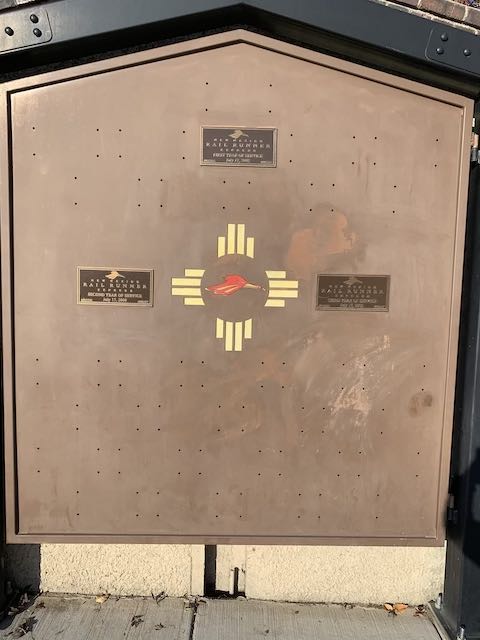
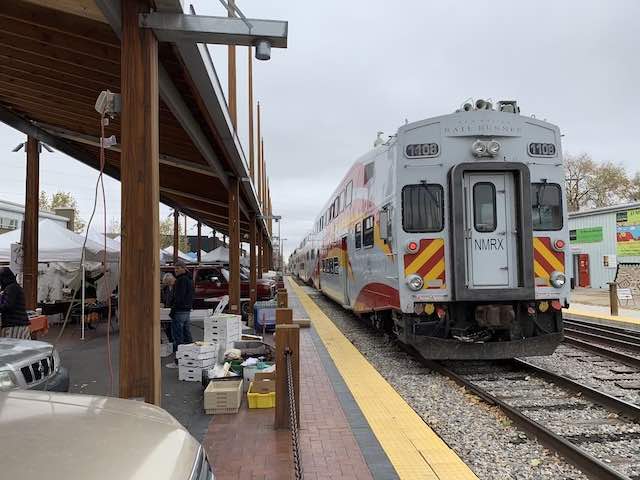
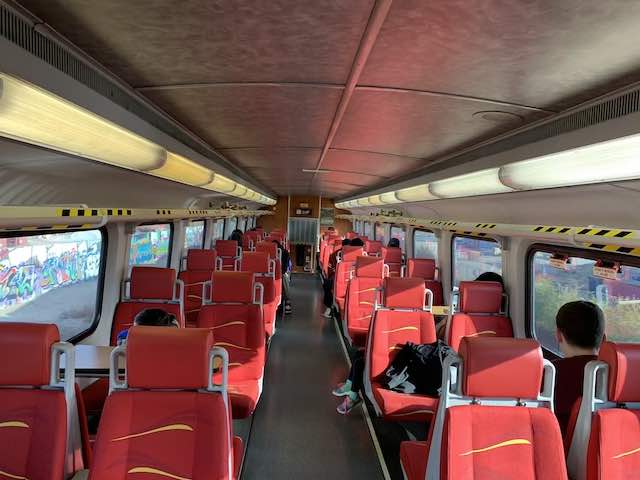
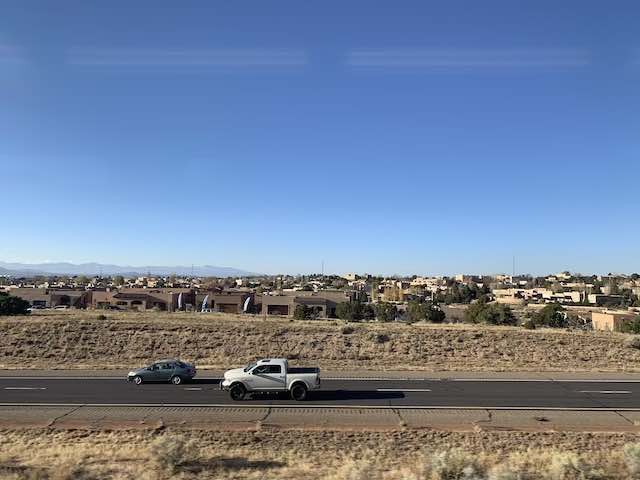
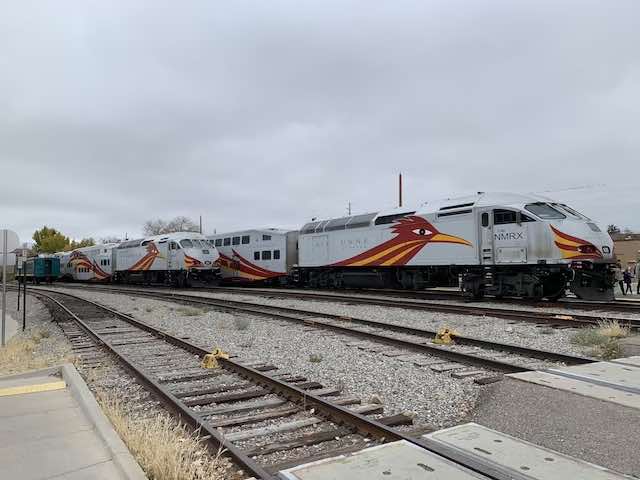
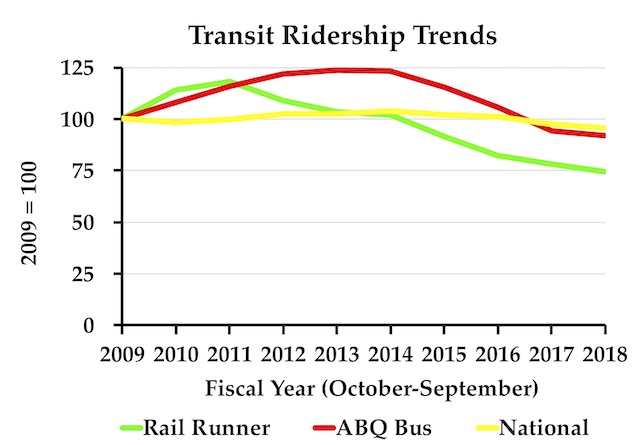








DMU’s would be better for lighter traffic, but still we aren’t expecting roads to profitable to survive :$
Why did ridership peak in 2011? Was there a low, introductory fare level to boost ridership in the first few years of operation which subsequently expired? RailRunner’s decline seem to precede both the national trend and the local decline in ABQ bus ridership.
The train is dumb. The 64-mile one-way trip would marginally cost $7.00 for car gasoline, plus with the train you’d either have to rent a car or Uber/Lyft your way around either spread out city if the bus routes won’t take you close to where you need to be.
But NM has always been a fairly blue state and recently turned deep blue, as did its neighbor CO. Citizens of both states deserve to receive the consequences of their voting decisions, good and hard. Both states will undoubtedly slide into the type of high crime/high tax rate/high poverty rate sh*tholes that typify the other deep blue states.
The highwayman at it again with his repetitive rant…..with bad grammar.
“Expects roads to BE profitable”
Given that a mile of rail costs 5-20 times MORE per mile than a mile of road. Not to mention the greatly reduced geographic distribution and greater need for consecutive maintenance. Roads may not be profitable…but they’re cheaper for municipalities to own, operate and repair. But if you want to remove your cars tires and replace them with train set wheels be my guest, Top Gear did it.
https://www.youtube.com/watch?v=mkpCzp0CmjY
ROADS have been apart of human history for 8,000 years. Be they dirt, clay, rocks, bricks, cobblestones or asphalt, THEY’RE CHEAPER. As are the vehicles that typically run on them. Even “Socialist” countries respect the notion of what’s cheaper to build. Or I could just quote the Ferengi 3rd rule of acquisition
“Never spend more for an acquisition than you have to. “
Your argument is political, not economic, I’m against excessive costs.
1 mile of railroad for every 10 miles of road, would phenomenal.
I don’t expect street lights to be on during the day.
Randal O’Toole practically gets paid to spend all day sitting on a toilet. Most other people have to do actual work to have an income :$
“Randal O’Toole practically gets paid to spend all day sitting on a toilet.”
And who’s paying you to spread your crap all over the comments?
“Most other people have to do actual work to have an income”
You seem to have quite a bit of time in your hands. Are you employed (as anything other than a shill) or do you still live with your parents?
O’Toole is the shill, not me! :$
So still living at home.
Nope! :$